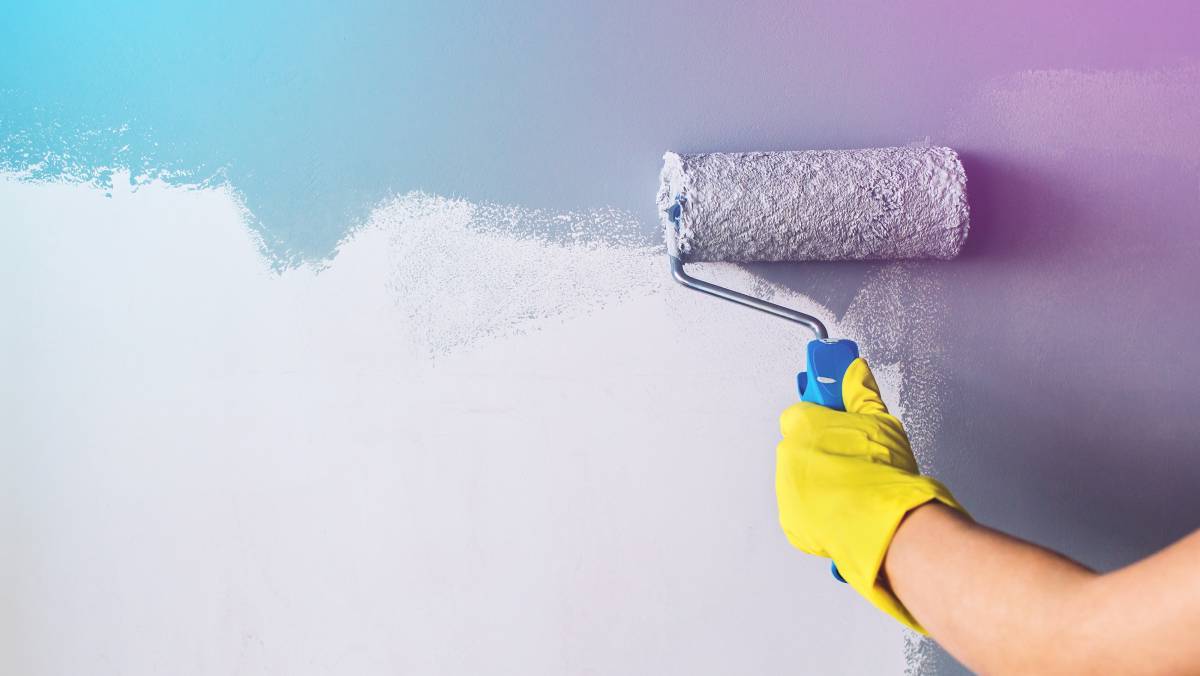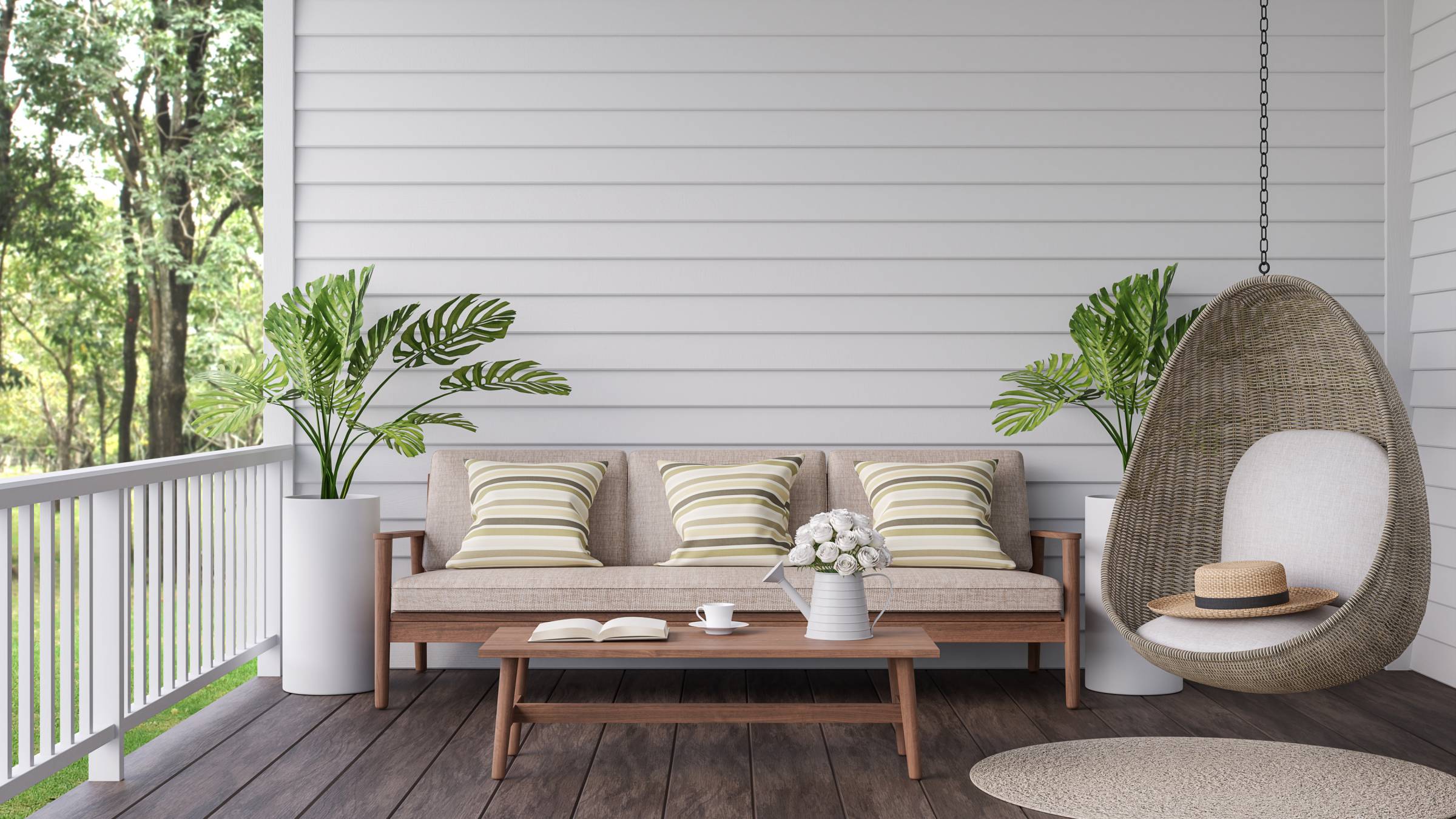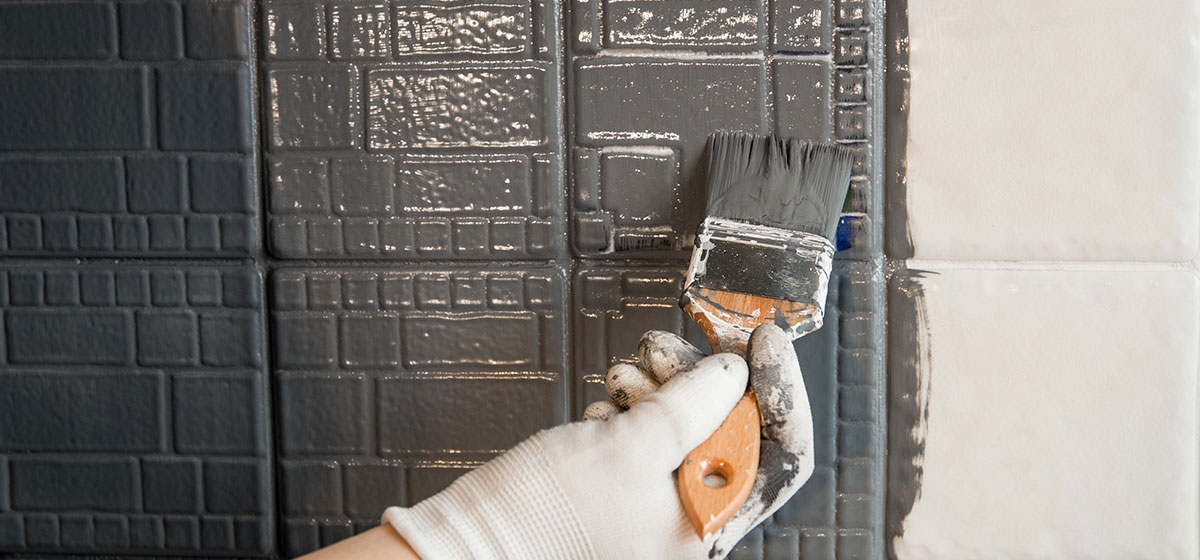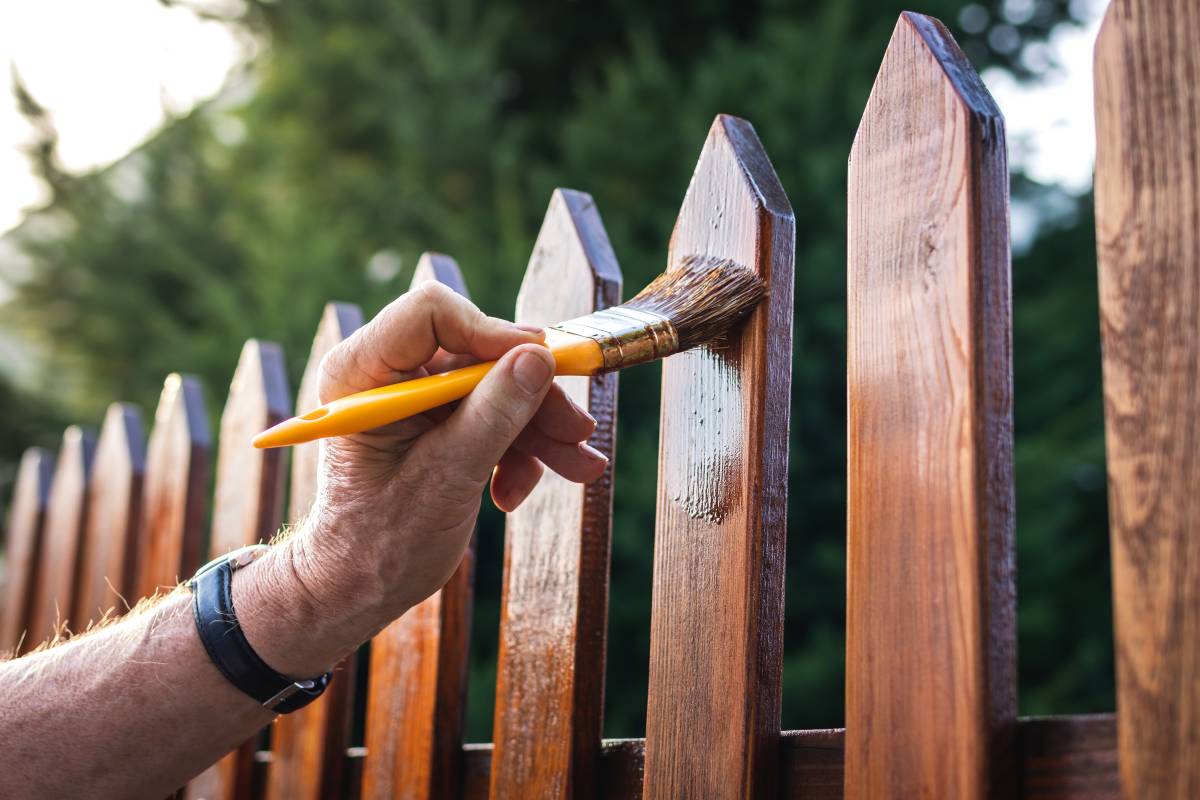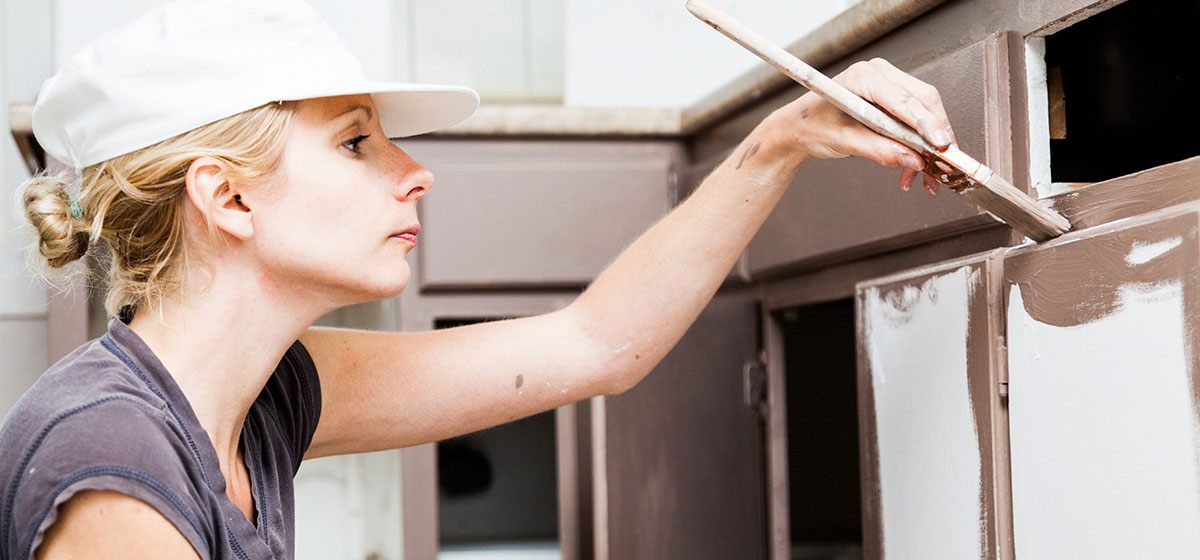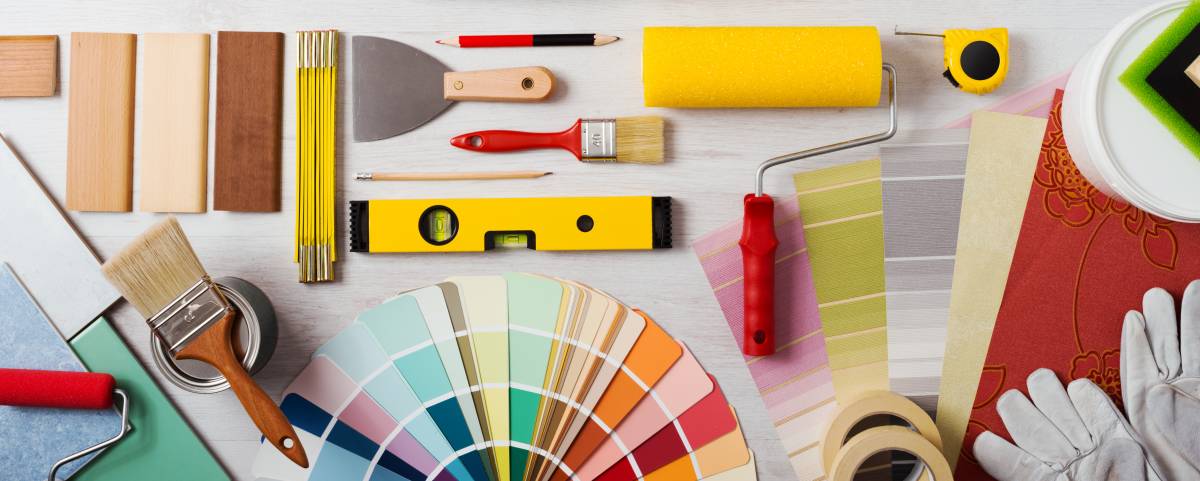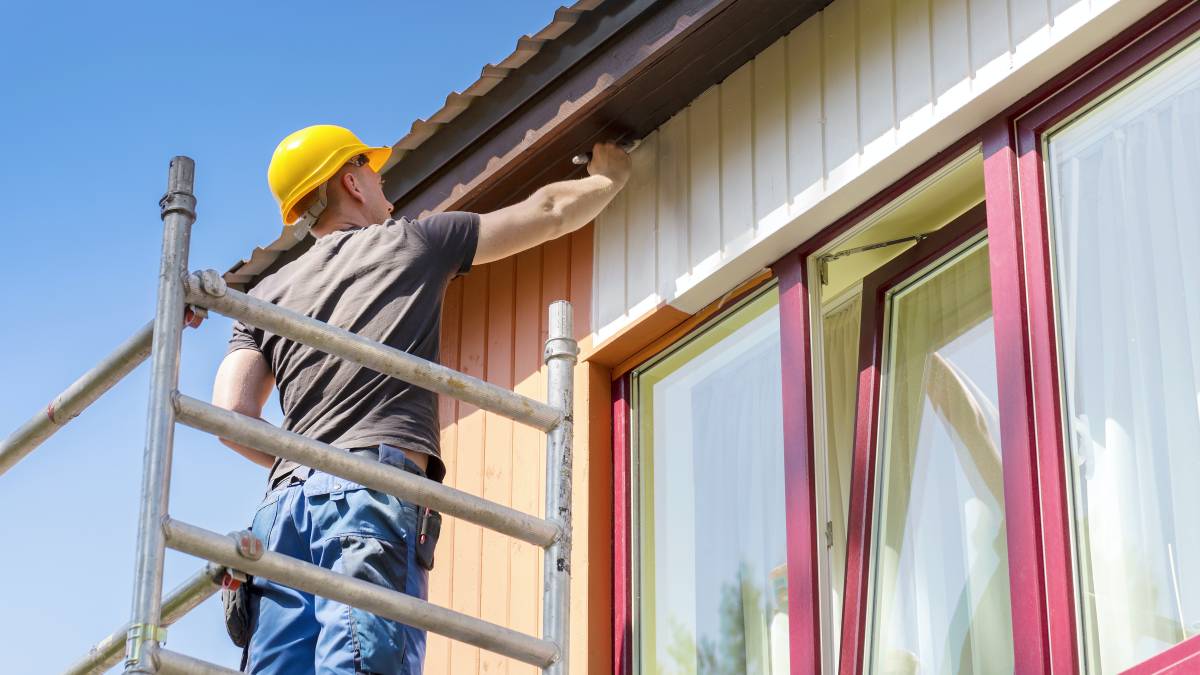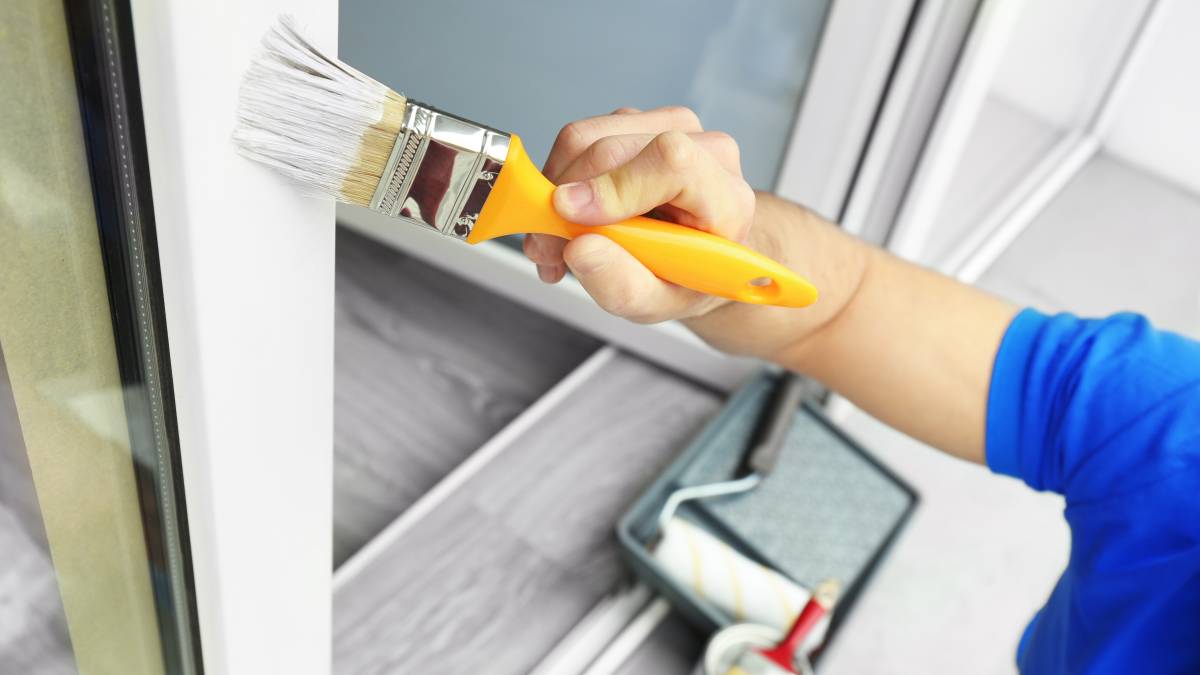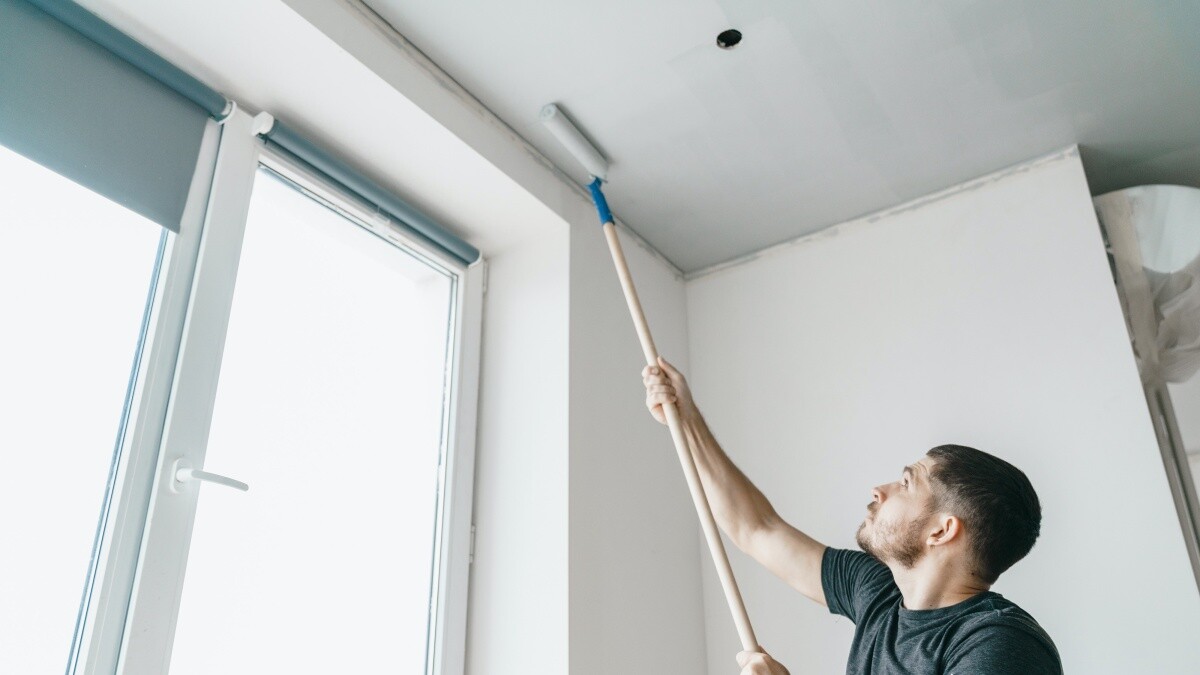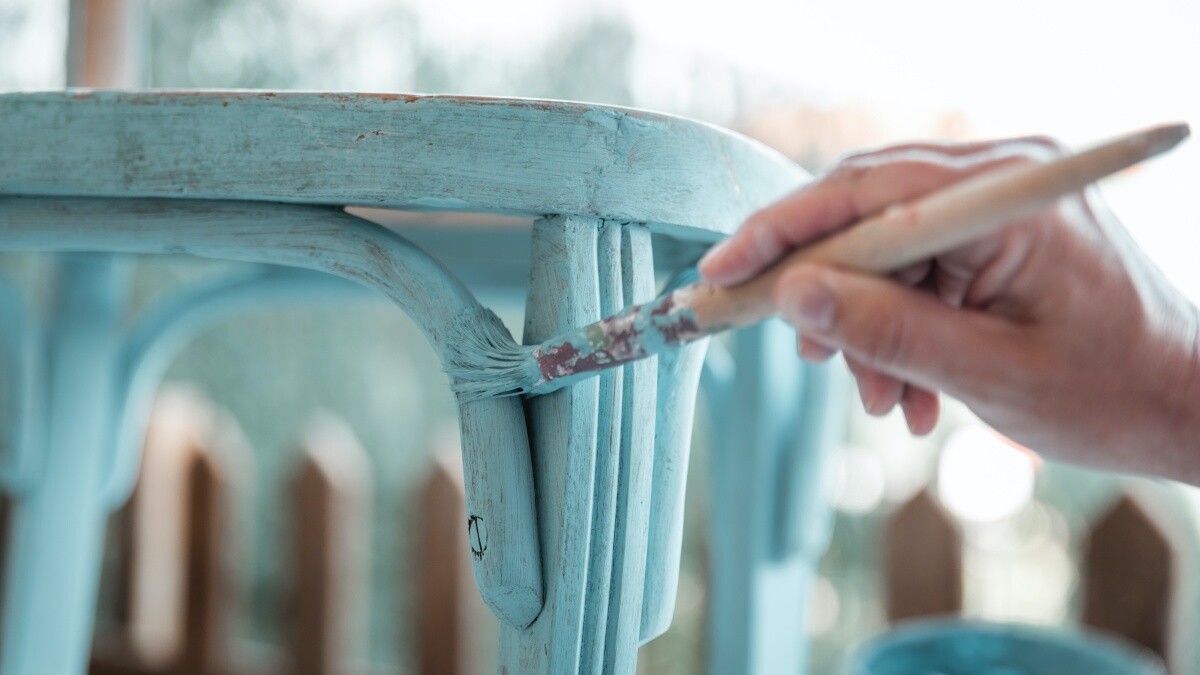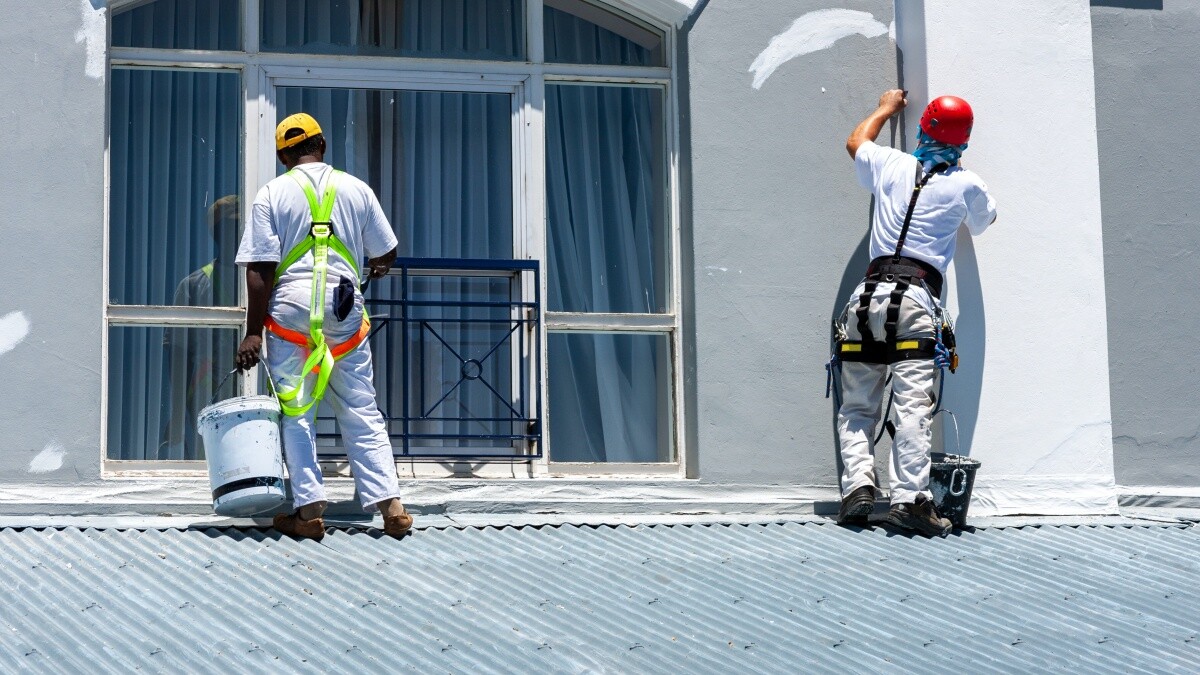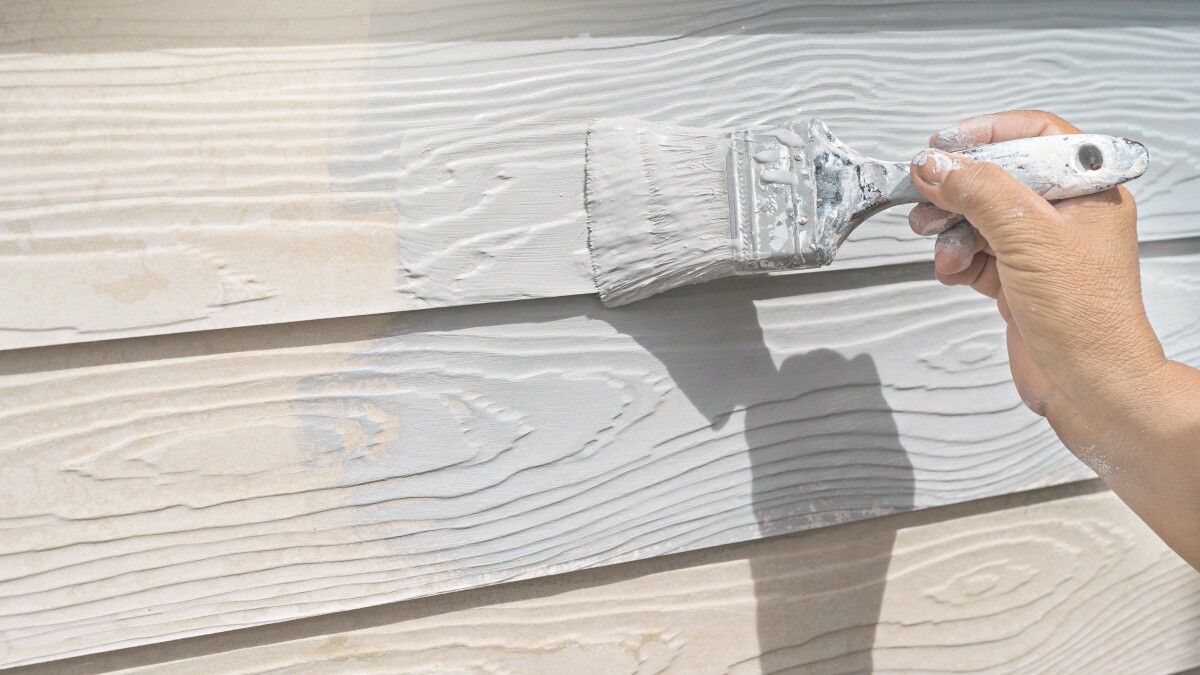- Home/
- Guides/
- Wall Painting/
- How to Paint High Walls
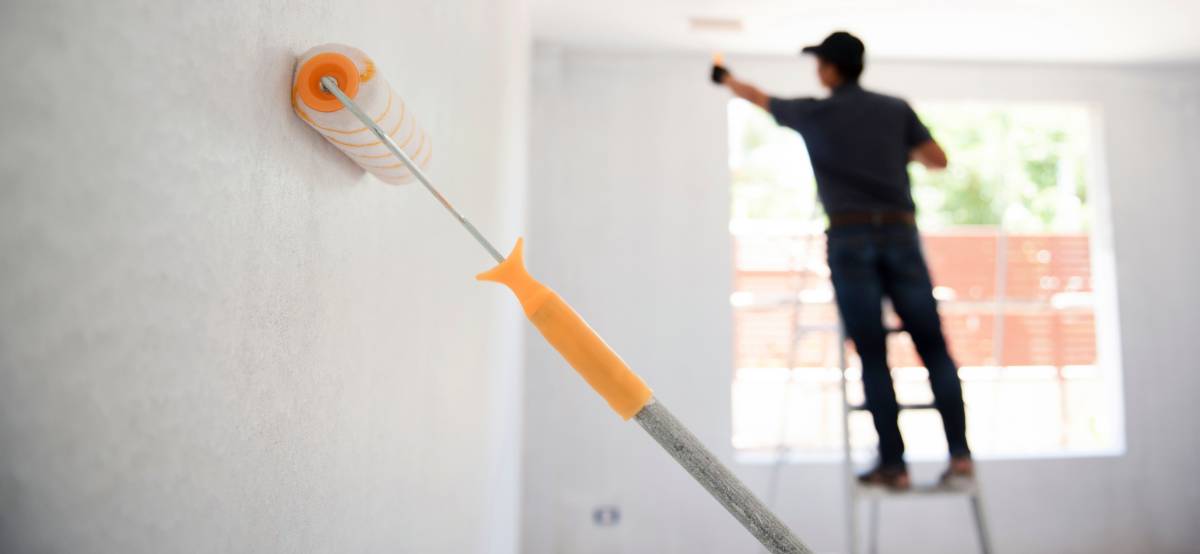
How to paint high walls: A step-by-step guide
It doesn’t have to be a daunting task.
Find a wall painterLast Updated on
Painting your walls can be a great way to revamp your home and add a personal touch to your living space. However, painting high walls can be daunting, especially if you’re new to DIY.
But don’t worry; with the right tools and knowledge, painting your walls can be a breeze! Let’s explore some tips and tricks on how to paint high walls.
Materials
- Paint of your choice
- Primer
- Drop cloths or plastic sheeting
- Paint tray or paint bucket
- Painter’s tape
- Paint edger
- Paint roller
- Paintbrush
- Extension pole
- Ladder
- Ladder leveller (optional for painting walls above stairs)
- Bucket or pail hook (optional)
Tips for painting
Before we dive in, here are some basic dos and don’ts when painting high walls:
- Plan ahead. Figure out how to cover furniture, prepare your painting materials, and set a timeline for the actual painting job. Measure the wall you’ll paint to determine how tall a ladder you’ll need.
- Choose your paint colour carefully! Take the time to compare samples to help you figure out which one is the right fit for you. You could also consult your local paint or hardware store.
- While painting, run your roller in a “w” shape like a zigzag because this will give you the best finish once the paint dries. Use slow strokes to avoid splatter.
- Make sure your chosen ladder is stable. Safety should always come first! You could also recruit a friend or family member to help you keep the ladder steady while you paint.
- If the paint fumes are too much, try cutting up some onions and leaving them around the room.
☞ Learn more: House painting hacks
How to paint high interior walls
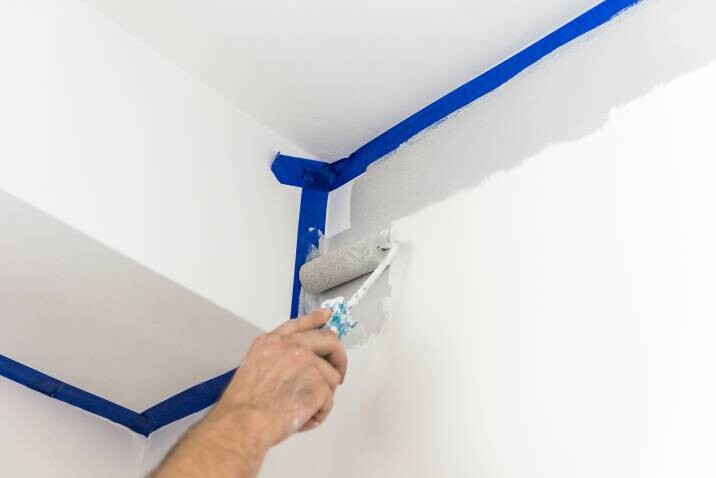
1. Prepare the room
If you can, move furniture away from the wall. Cover furniture and flooring with drop cloths or plastic sheets to avoid unwanted paint splatters.
2. Use a ladder to reach the highest areas and corners of your wall
You could hang your paint bucket on a hook to make the job easier. Opting to use a paint roller with an extension pole works, too.
3. Prepare the wall using a broom or brush to remove all the dust and grime
Also, repair any surface holes, dents, or cracks.
4. Prime your wall
This is essential if you’re painting over dark colours or working with a wall that has never been painted before.
5. Cut in the edges of your wall and ceiling, including the wall trim
If you’re asking yourself, “How do I paint high wall edges?” the easy answer is to purchase a paint edger that will help make your painting more even than when using a regular paintbrush. You could also use painter’s tape to ensure you’re painting in straight lines.
Additionally, here’s how to paint trim on high walls:
- Tape the edges: Use painter’s tape to mask off any areas you don’t want to paint.
- Begin painting: Start at the top of the trim and work your way down. Use a paintbrush to apply paint to the corners and edges of the trim. Then, use a small roller to apply paint to the flat surfaces of the trim.
- Work in sections: Paint the trim in small sections to ensure the paint goes on evenly and doesn’t drip.
6. Once your edges are done, start the actual wall painting process with a paint roller
It’s best to start high and work your way down. Remember to make the “w” zigzag shape when painting.
7. Allow your first coat of paint to dry
Apply a second or third coat of paint for good measure.
8. Clean up while waiting for the finished product to dry!
Set aside your remaining paint for future use, fold your drop cloths, wash your brushes, rollers, and paint trays, and return your trusty ladder to its storage space.
☞ Also read: Tips for painting an interior wall
How to paint a high wall above stairs

1. Prep your workspace
Remove any wall hangings such as picture frames, paintings, and mirrors. Cover any surrounding furniture and your stairs’ handrails with drop clothes or plastic sheeting.
Since your work surface will likely be uneven, how do you paint high walls above stairs when using a ladder? You’ll need a ladder leveller – a tool that makes ladder placement safer. If you don’t want to use a ladder, no worries: you could use a paint extension pole instead.
2. Remove dirt using a brush or broom and cover any holes
Similar to painting high interior walls, apply primer to your wall if needed. Cut in the edges and wall trim.
3. Start the actual painting process
Make sure to apply two coats of paint so it won’t fade easily.
4. Let your paint dry and start cleaning up
Make sure to put up a sign or let people inside the house know that the wall is freshly painted.
How to paint high exterior walls
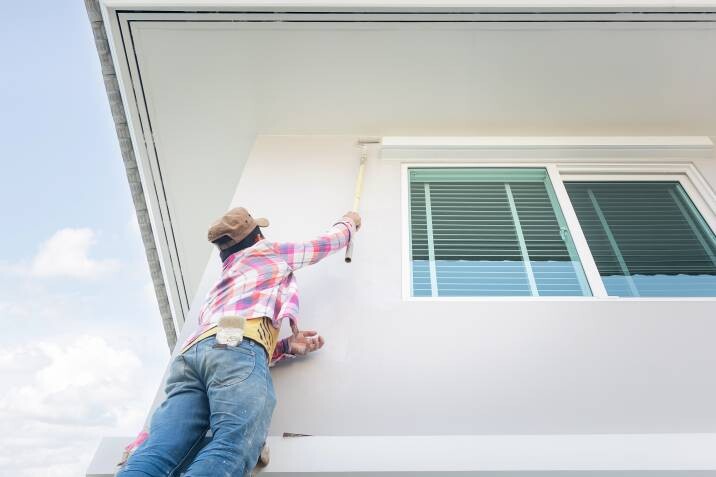
1. Prepare, prepare, prepare
Aside from clearing the area around your workspace, it’s best to check the weather forecast before doing any exterior painting. You wouldn’t want a rain shower ruining all your hard work!
2. Cover any holes and repair cracks
Just like when painting other parts of a room or building, prepare the wall using a broom or brush to remove all the dust and grime.
3. Primer is essential if you’re painting a brand-new wall
If you’re only renovating or repainting, you could skip this step. You could use a ladder, a scaffolding setup, or a paint roller extension pole to help you reach the highest parts and corners of your wall.
4. Cut in the edges of your wall
Dip a high-quality paintbrush into the paint and remove any excess by tapping the brush against the side of the can. Then, using long, even strokes, carefully paint a straight line along the edge of the wall. When cutting in, it’s important to work slowly and patiently and choose the right type and size of brush for the job.
5. Start painting!
Remember: start high, work your way down, and make the “w” zigzag shape when painting.
6. Apply two or three coats of paint for good measure
After all, exterior walls are more exposed to sun, dirt, and other elements.
7. Make sure to clean up right after
Be sure to clean up immediately, especially if you’ve used ladders or scaffolding that might pose a safety hazard to other people in the vicinity.
☞ Other related reads:
Ensure safety and success in your home painting project
Painting your walls can be a fun and rewarding experience, but prioritising your safety throughout the process is important. Invest in the right equipment and take necessary precautions to prevent accidents and ensure a successful outcome.
If you’re unsure about tackling a specific painting style, don’t hesitate to hire a professional wall painter. With the help of trusted Taskers on Airtasker, you can achieve your home renovation goals.
Find wall painters, fast
Find a wall painter
FAQs on painting high walls
Generally, the extra tools painters use for this type of job are ladders, paint rollers, and paint brushes with extension poles. It’s ideal to have a ladder because it makes it easier for them to reach the tops and corners of walls. Painters may also use scaffolds when painting a particularly large wall or ceiling.
Some people prefer not to use a ladder due to safety reasons. In such cases, getting the right-sized paint roller is the key to painting a wall. Make sure to buy the longest paint roller and extension pole you can find. This painting process might be tiring, so make sure to take regular breaks.
Related articles
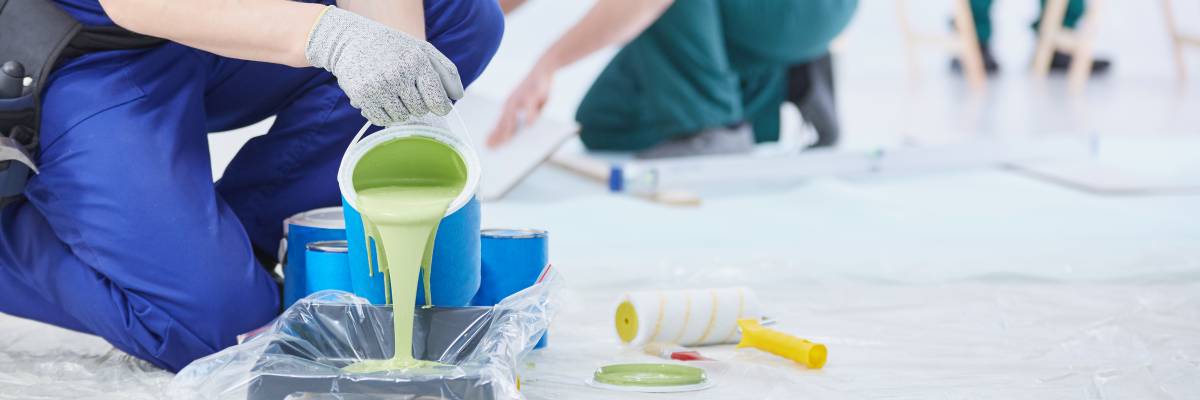
How to estimate a paint job
Read more
Related price guides
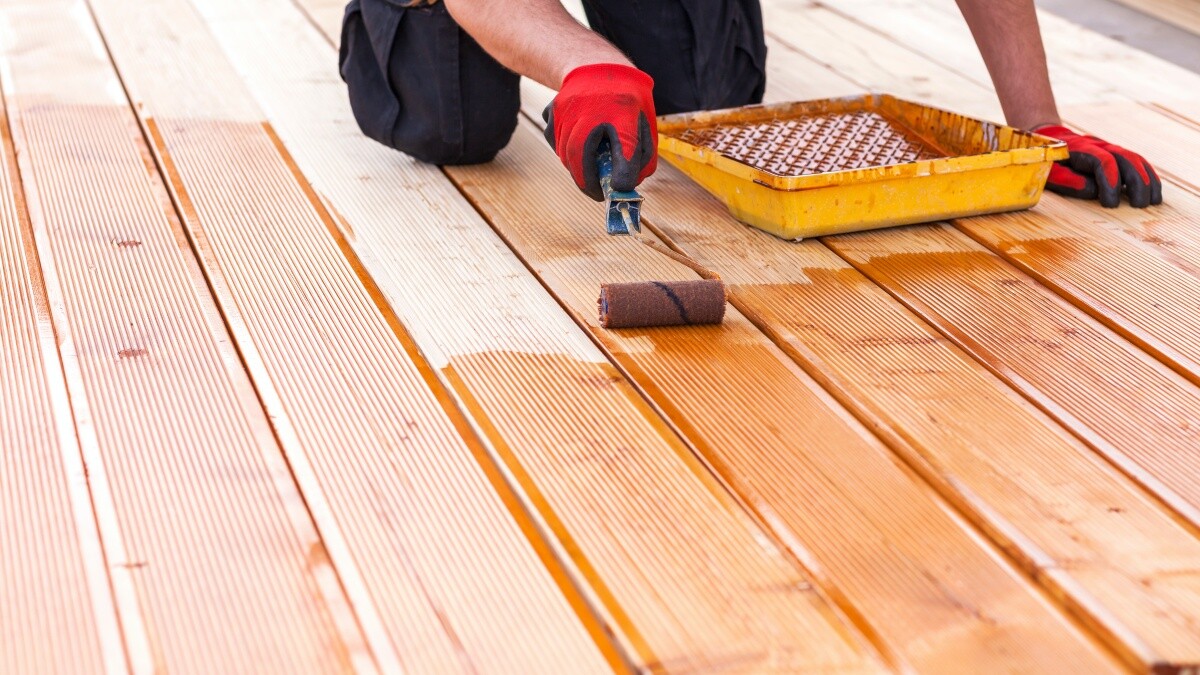
How much does deck painting cost?
Read more
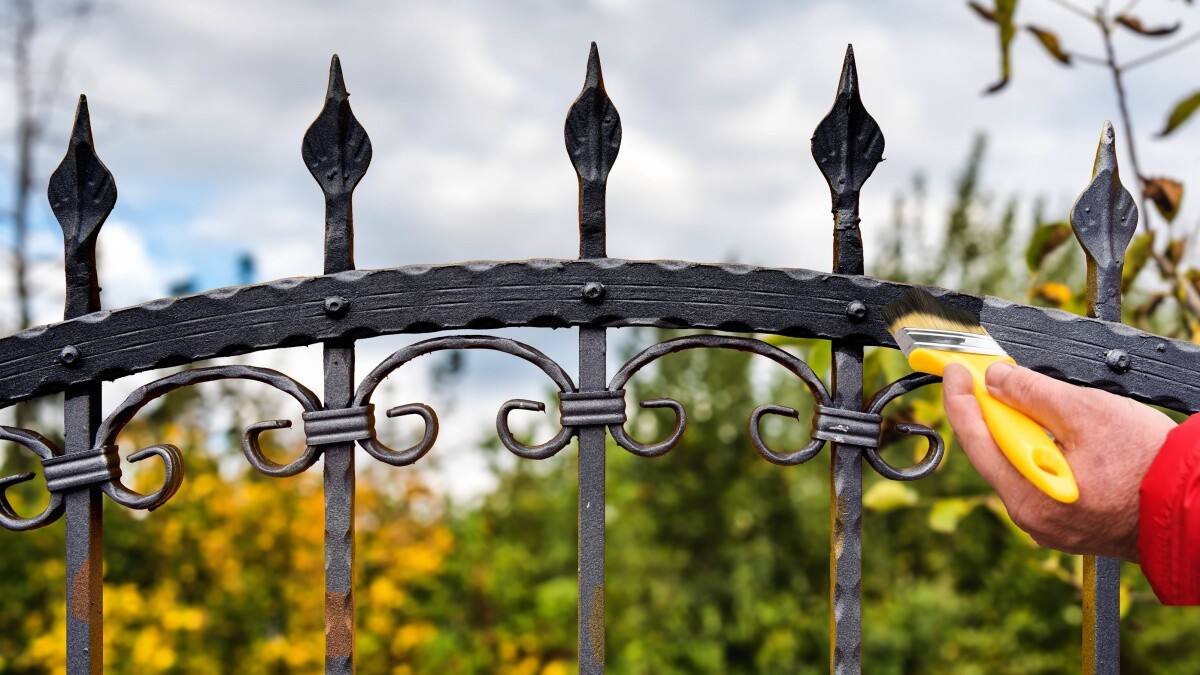
How much does fence painting cost?
Read more
Let's do this!
It's free and takes only a minute.

